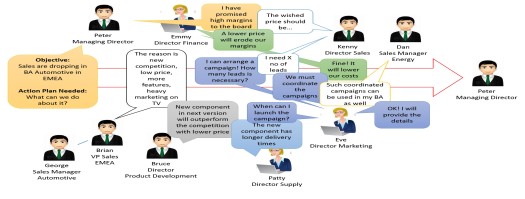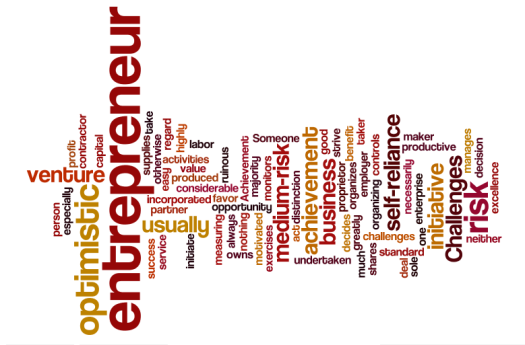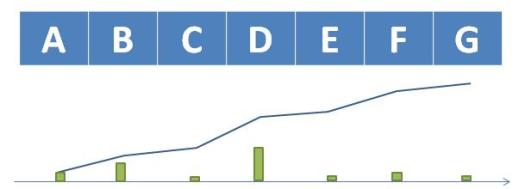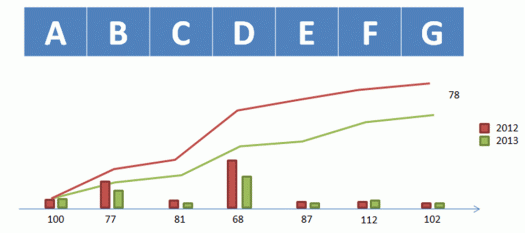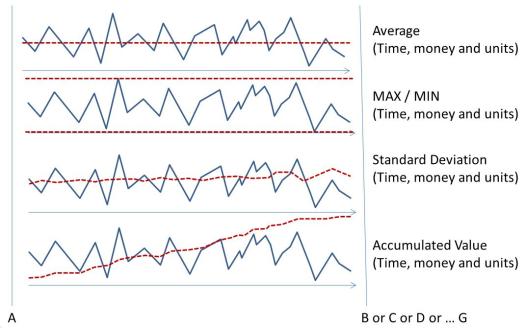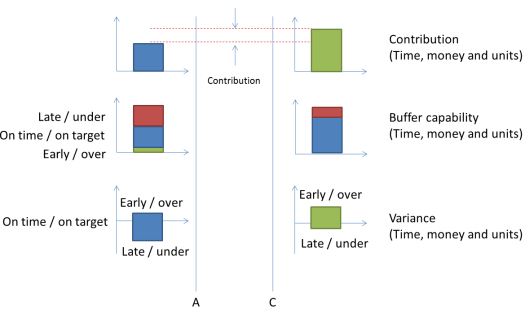Finally, we’re here. I’m very proud to announce Sales Scenario – your Sales Tactics App. It will profoundly change the way you make sales decisions. Instead of reading prepared reports or analyzing fancy charts, you and your team will actually run scenarios of the future to find the best way forward, by asking yourselves “What if …” The result will be better and more well-grounded decisions, which in long term will mean significantly higher profitability for your company. In my last post I told you:
“There are modern solutions, that in one single tool let you run and elaborate among future sales specific scenarios as many times a week you need to, invite and chat with your management team, friends or experts – when they got the time to – and get inspiration from top sales gurus, to make better and more well-grounded decisions that are already implemented from start, so you can stay as the leader in your specific market.”
Let me introduce the core principle of Sales Scenario App. The Tactical Perspective. In The App you fill in sales figures of where you are today (for example revenue achieved so far), where you need to go (for example your end year revenue target) and the chart in the app will tell you what to do. 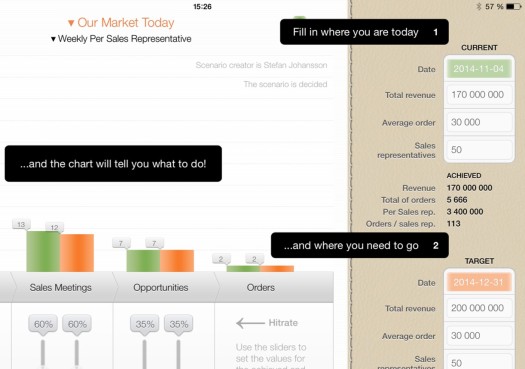 The App will calculate backwards in your sales process based on your input. The amount of required numbers in the stages in the process are decreased according to the actual efficiency – the hitrate. An example. Opportunities. The chart will show both how many (in average per sales rep) opportunities that are achieved the current date and how many every sales rep has to create from current date to target date (typically year end) to reach the target.
The App will calculate backwards in your sales process based on your input. The amount of required numbers in the stages in the process are decreased according to the actual efficiency – the hitrate. An example. Opportunities. The chart will show both how many (in average per sales rep) opportunities that are achieved the current date and how many every sales rep has to create from current date to target date (typically year end) to reach the target. 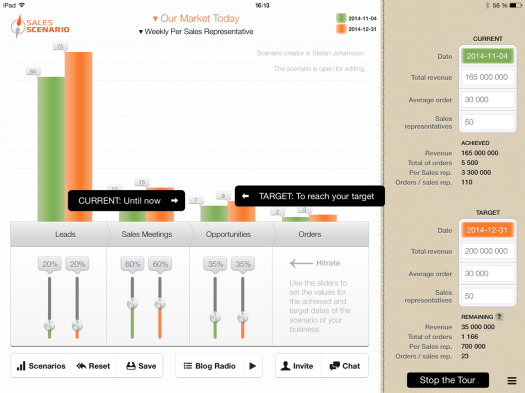 In this case every sales rep has created 7 new opportunities every week (the green column in the chart), but from now on until target date they have to create 9 new (the orange column), otherwise the target would not be met. But is that amount really possible? If not, start play with the scenario by adjusting one or several constraints. Or run several scenarios, until you find the best. That’s more dynamic than a report or fancy chart, isn’t it? It’s like running a chart. Summary. The core principle of Sales Scenario is that good decisions are not made in isolation in response to an individual’s idea or individual piece of data. They require shared knowledge and analysis of a combination of different pieces of information. It adds future dimension as well by running several scenarios and asking the “what if question”. The Sales Scenario is available on AppStore today. Please let me know what you think! Best Regards, Stefan
In this case every sales rep has created 7 new opportunities every week (the green column in the chart), but from now on until target date they have to create 9 new (the orange column), otherwise the target would not be met. But is that amount really possible? If not, start play with the scenario by adjusting one or several constraints. Or run several scenarios, until you find the best. That’s more dynamic than a report or fancy chart, isn’t it? It’s like running a chart. Summary. The core principle of Sales Scenario is that good decisions are not made in isolation in response to an individual’s idea or individual piece of data. They require shared knowledge and analysis of a combination of different pieces of information. It adds future dimension as well by running several scenarios and asking the “what if question”. The Sales Scenario is available on AppStore today. Please let me know what you think! Best Regards, Stefan


